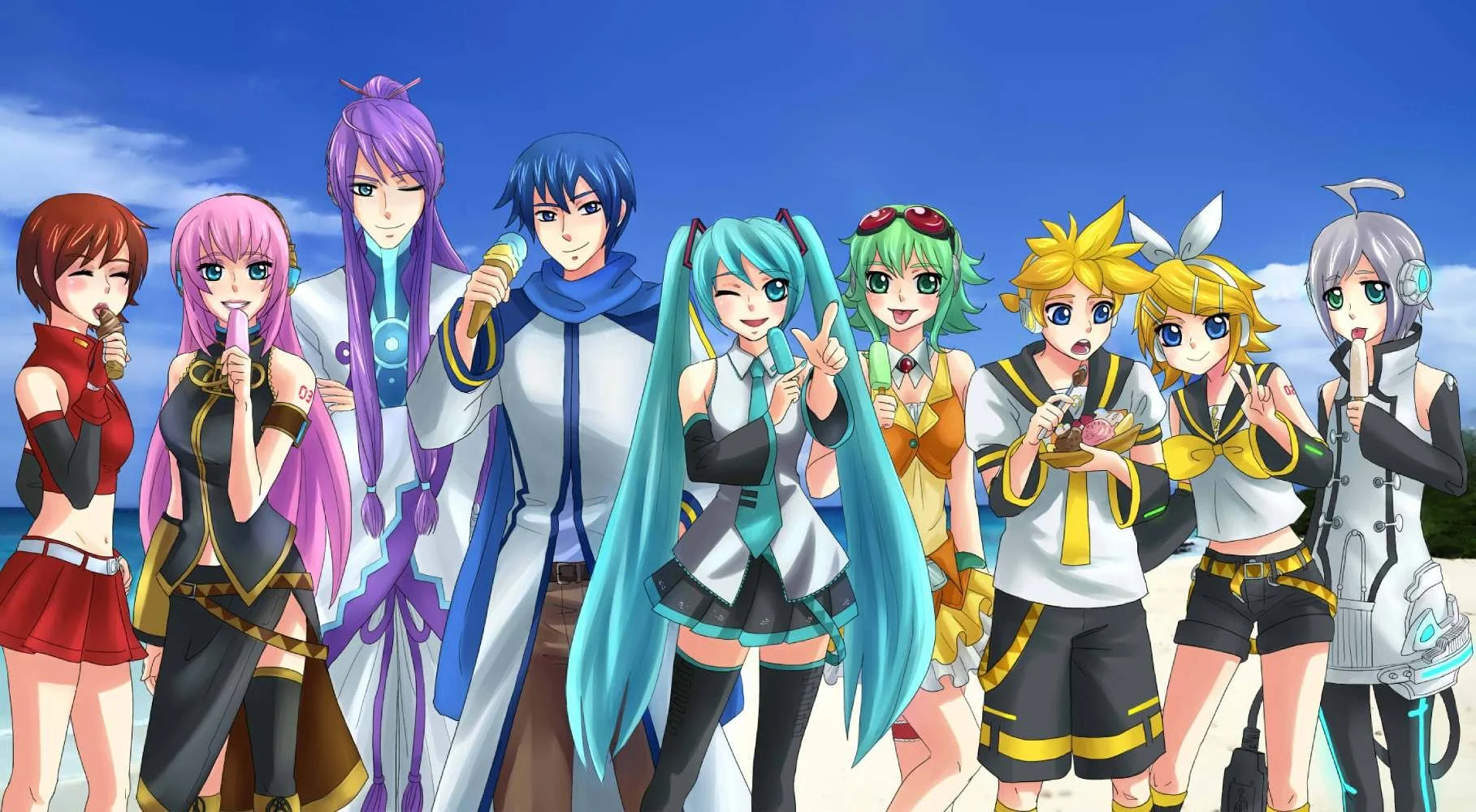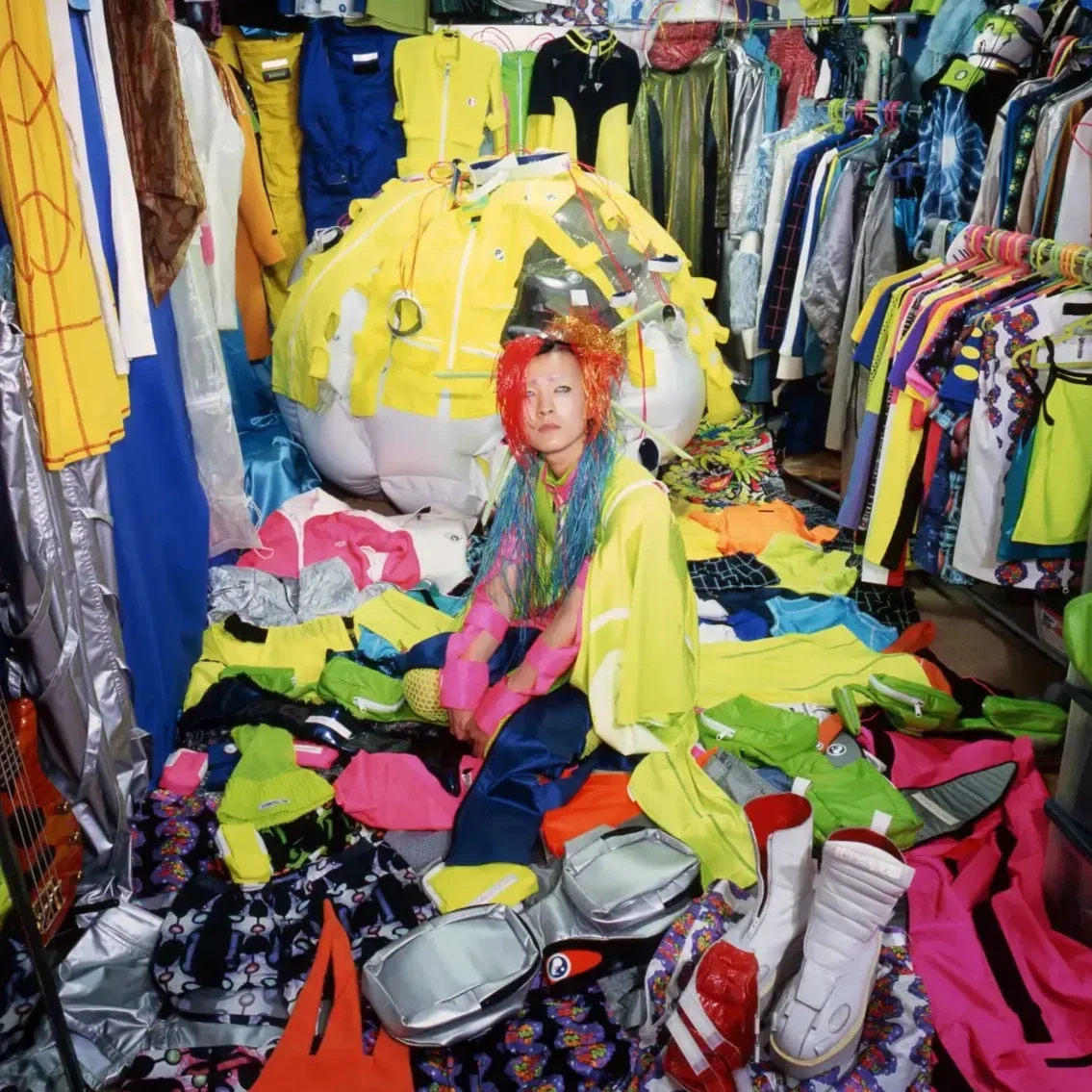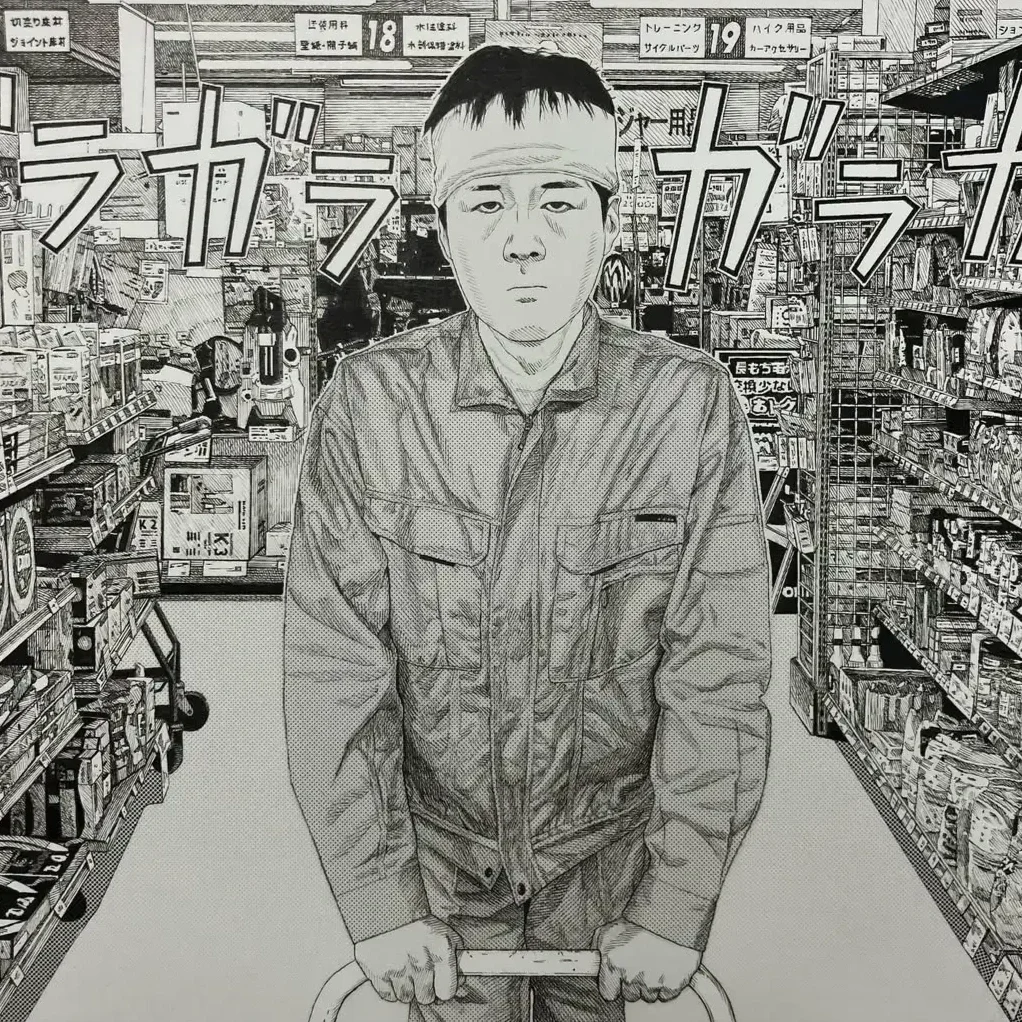The World of Vocaloid - The Global Music Phenomenon Explained
Vocaloid fanart by Heldrad
In 2004 Vocaloid emerged as a bridge between the realms of technology and music while creating a unique cultural impact.
Even after two decades, many struggle to grasp the context of this audio phenomenon. We lay it all out for you. What is Vocaloid, how does it work, what is the culture behind it, and what do these colorful anime characters have to do with it. Oh, and who the hell is Hatsune Miku.
At the end of this article, you will understand how Vocaloid has transformed from a niche technological tool into a global sensation.
Understanding Vocaloid
Is Vocaloid a voice or a synthesizer sound? And who actually makes the songs those characters are singing? Without the right lead it can be pretty overwhelming to pinpoint the exact meaning of Vocaloid. So here we go.
Vocaloid, a singing voice synthesizer software developed by Yamaha, has revolutionized the way music is produced and consumed. To understand Vocaloid, you must first grasp its basic functionality. Similar to how a piano synthesizer replicates the sound of a piano, Vocaloid synthesizes human vocals. Users input lyrics and melodies, which the software processes to produce singing. This process involves selecting from various voicebanks, each representing different vocal characters known as Vocaloids.
The Vocaloid voice and character called GUMI│© Internet Co., Ltd.
The interface of Vocaloid software is designed to be user-friendly, featuring a piano roll for note input, an editor for organizing tracks, a mixer for adjusting volumes and effects, and tools for fine-tuning vocal characteristics. Users can import instrumental tracks, manipulate multiple Vocaloids simultaneously, and utilize advanced editing capabilities that have evolved significantly from earlier versions. Initially, Vocaloid was limited to a single voice at a time, and production heavily depended on the producer’s musical prowess. Today, it offers much more flexibility and support for various languages, including Japanese, English, Spanish, Chinese, Korean, and Catalan.
One of the critical aspects of Vocaloid is its voicebanks, recorded by professional singers or actors. Each phoneme (a distinct unit of sound in a specified language that distinguish one word from another) is captured individually, ensuring the synthesis of realistic and expressive vocals. The process of recording these phonemes can be lengthy and complex, especially for languages like English that require thousands of phonemes. Despite these challenges, Vocaloid has continuously improved, making it more accessible and versatile for users.
Vocaloid interface
The Rise of Vocaloid Culture
Beyond its technical capabilities, Vocaloid ingeniously created a global culture of millions of enthusiasts by introducing character avatars linked to voicebanks. In no time, a massive community emerged, becoming deeply attached to these digital personas. This community of producers, illustrators, and enthusiasts began creating songs, artworks, and stories centered around these characters.
This addresses one of the biggest confusions surrounding Vocaloid; who writes the songs for these characters? The answer is simple—everyone does. The unique aspect of Vocaloid lies in its community of artists who bring each character to life through the songs they compose using its voice.
The Vocaloid fanbase is known for its creativity and passion, thriving on platforms like Niko Niko Douga and YouTube. These online communities have become hubs for sharing original songs, remixes, and fan art, fueling the continuous growth and evolution of Vocaloid culture. Unlike traditional music scenes, Vocaloid is highly collaborative and decentralized, allowing anyone with the software to contribute to the expanding universe of Vocaloid content.
Vocaloid enters real life
Vocaloid’s influence extends far beyond the digital realm, making significant inroads into mainstream pop culture, primarily through its virtual concerts. These events feature holographic performances of Vocaloid characters, drawing thousands of fans and showcasing a unique blend of music and cutting-edge technology. The ability to see a digital character perform live on stage offers an immersive experience that blurs the line between reality and virtuality, creating a spectacle that has captivated audiences worldwide.
The most iconic of these performers is Hatsune Miku, who often headlines these virtual concerts. Utilizing advanced holographic technology, Miku and other Vocaloid characters appear on stage as three-dimensional projections, interacting with live musicians and responding to audience reactions. The concerts are meticulously choreographed, with high-quality visuals and sound design that make the experience feel incredibly lifelike. Fans can see their favorite digital idols perform elaborate dance routines, sing hit songs, and even engage with the crowd, creating an atmosphere akin to that of traditional concerts.
One of the first major breakthroughs for Vocaloid concerts was the “Hatsune Miku: Magical Mirai” series, which began in 2013 and continues to be a highly anticipated annual event. These concerts have been held in various locations around the world, including Japan, the United States, and Europe, allowing international fans to experience the magic of Vocaloid live performances. The success of these virtual concerts has opened up new possibilities for the entertainment industry. The technology behind these performances has been continuously refined, resulting in even more realistic and engaging shows.
Hatsune Miku hologram concert│© Crypton Future Media
Beyond concerts, Vocaloid characters have also made their way into other areas of pop culture. They have appeared in commercials, promoting everything from technology products like the Sony Xperia, to food and beverages brands like FamilyMart. Their recognizable and appealing designs make them ideal brand ambassadors, capable of attracting attention and resonating with a broad audience.
In the realm of video games, Vocaloid characters have been featured in numerous rhythm games, such as the “Project DIVA” series, where players can interact with their favorite Vocaloids and perform songs using rhythm-based gameplay mechanics. These games have been successful in bringing Vocaloid music to a wider audience and have become a staple for fans of both rhythm games and Vocaloid. Television appearances have further cemented Vocaloid characters’ place in pop culture.
By breaking out of the confines of digital media and making tangible connections with fans through concerts, games, commercials, and television, Vocaloid characters have transcended their origins as software tools. They have become influential cultural icons, paving the way for future developments in the intersection of technology and entertainment.
Kaito in Project DIVA│© SEGA
Most famous Vocaloid characters
Among the many Vocaloid characters, a few have achieved more fame and recognition than others. These characters are not merely tools for music production but beloved icons with their own identities and fanbases.
Hatsune Miku
Hatsune Miku was developed by Crypton Future Media, and is undoubtedly the most iconic Vocaloid. Debuting in 2007, Miku quickly became a global sensation with her teal twin-tails and futuristic design. She symbolizes the Vocaloid phenomenon, representing innovation and the future of music. Miku’s voicebank, created using samples from voice actress Saki Fujita, has been the foundation of countless hit songs.
Hatsune Miku│© Crypton Future Media, INC.
Kagamine Rin and Len
This duo was also developed by Crypton Future Media. The twin Vocaloids Kagamine Rin and Len are known for their versatile voices and dynamic performances. Often depicted as siblings or mirror images of each other, Rin and Len have been featured in various musical genres, from pop and rock to electronic and classical.
Kagamine Rin and Len│© Crypton Future Media, INC.
Megurine Luka
Megurine Luka stands out as a bilingual Vocaloid capable of singing in both Japanese and English. Her mature voice and sophisticated appearance have made her a favorite among fans and producers. Luka’s versatility allows her to fit seamlessly into different musical styles.
Megurine Luka│© Crypton Future Media, INC.
Kaito and Meiko
Kaito & Meiko are among the earliest Vocaloids, developed by Yamaha. Initially, they struggled to gain popularity, but over time, they have become beloved figures in the Vocaloid community. Kaito and Meiko are often associated with nostalgic and traditional-themed songs, reflecting their roles as pioneers in the Vocaloid landscape.
Kaito and Meiko│© Crypton Future Media, INC.
GUMI
GUMI was developed by Internet Co., Ltd., and is known for her realistic vocal tone and wide vocal range. Her voice provider, Megumi Nakajima, is a well-known voice actress and singer, adding to GUMI’s appeal. GUMI has been featured in various musical projects.
GUMI│© Internet Co., Ltd.
Influential Vocaloid Artists
Behind each of the Vocaloid characters stands a community that, through their musical creations, brought the different Vocaloid personas to life. The Vocaloid platform has given rise to numerous talented artists who have significantly influenced the music scene. These producers have pushed the boundaries of what can be achieved with Vocaloid software, creating some of the most memorable and impactful songs in the genre.
ryo (supercell)
Ryo is one of the most renowned Vocaloid producers. As the founder of the music group supercell, ryo’s song “World is Mine” featuring Hatsune Miku became a massive hit, playing a crucial role in popularizing Vocaloid music. His compositions are known for their catchy melodies and emotional depth, resonating with fans across the globe.
kz (livetune)
kz, the sole member of livetune, is another influential figure in the Vocaloid community. His electronic and pop compositions have garnered millions of views, with songs like “Tell Your World” becoming iconic, also using the voice of Hatsune Miku. kz’s work has been featured in various media, including commercials and promotional campaigns.
DECO*27
DECO*27 is celebrated for his emotional and relatable lyrics, often exploring themes of love and relationships. His songs, such as “Yowamushi Montblanc” using the voice of Vocaloid character GUMI, have touched the hearts of many fans.
Mitchie M
Known for his exceptional skill in tuning Vocaloid software, Mitchie M produces incredibly realistic vocals. Hits like “Freely Tomorrow” using the voice of Hatsune Miku, showcase his talent for making Vocaloid voices sound natural and expressive, earning him a dedicated following.
Hachi (Kenshi Yonezu)
Before gaining fame as a solo artist, Kenshi Yonezu was known as Hachi in the Vocaloid community. His unique style and storytelling ability are evident in songs like “Matoryoshka”, featuring both Hatsune Miku, and GUMI. Kenshi Yonezu’s transition from a Vocaloid producer to a successful solo artist highlights the platform’s potential to launch careers.
The Iconic Hatsune Miku
Hatsune Miku is more than just a Vocaloid; she is a cultural icon and a symbol of the digital age. Her impact on music, technology, and pop culture is profound, making her a fascinating subject of study.
Miku was developed by Crypton Future Media and released in 2007 as part of the “Character Vocal Series.” Her name means “First Sound of the Future,” reflecting her innovative role in the music industry. Miku’s voicebank was created using samples from voice actress Saki Fujita, giving her a distinct and versatile vocal range. Her design, characterized by teal twin-tails and a futuristic outfit, quickly captured the imagination of fans worldwide.
Miku’s rise to fame was swift and unprecedented. Songs like “World is Mine” and “Miku Miku ni Shite Ageru” became viral hits, propelling her to international stardom. Her distinct appearance and versatile voice captivated fans, leading to a surge in user-generated content featuring her character. This content ranged from original songs and remixes to fan art and animations, showcasing the creativity and passion of the Vocaloid community.
Hatsune Miku│© KEI
One of the most remarkable aspects of Hatsune Miku’s career is her virtual concerts, performing live in front of thousands of fans, both in Japan and internationally. The success of these virtual performances has paved the way for other Vocaloids to take the stage, expanding the possibilities of live music experiences.
Hatsune Miku’s influence also extends beyond music. She has appeared in commercials, video games, and even on TV shows like David Letterman’s late-night talk show. Miku has collaborated with various artists, did collabs with fashion brands like Bershka, and has a range of figurines and other merch available, further solidifying her status as a global icon.
Unlike traditional celebrities, Hatsune Miku’s personality and image are shaped by her fans. There is no official canon for her character, allowing fans to interpret and depict her in countless ways. This crowdsourced identity has contributed to her enduring popularity and versatility. Fans have created various personas and backstories for Miku, reflecting their unique perspectives and creative visions.
Now you know
After all, know you know what Vocaloid stands for and the absolute massive impact it had, and still has on global pop culture.
Vocaloid is a fascinating blend of technology, creativity, and culture. From its technical foundations as a voice synthesizer software to its cultural impact and the rise of iconic characters like Hatsune Miku, Vocaloid has left an indelible mark on the music industry and pop culture. The collaborative and fan-driven nature of Vocaloid culture continues to inspire and innovate, ensuring that Vocaloid will remain an influential phenomenon for years to come.


















Discover the top Vocaloid artists shaping the virtual music scene.